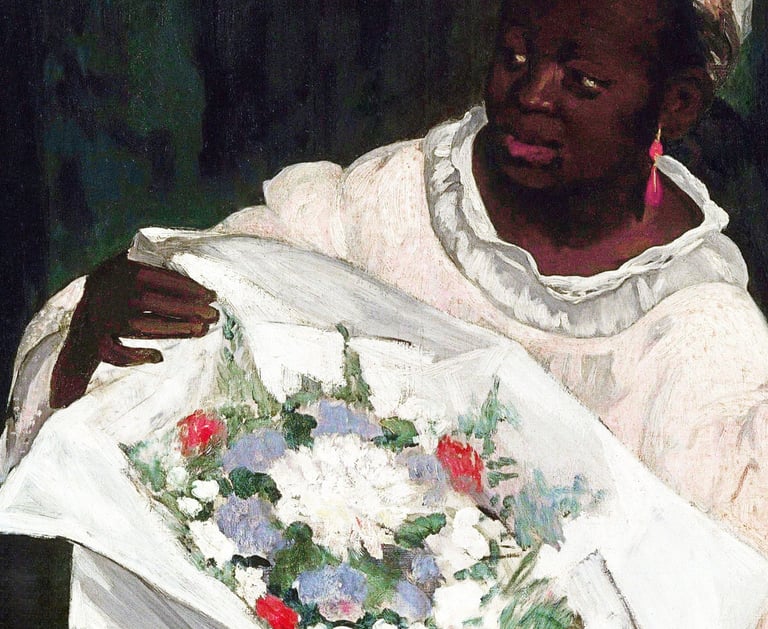Laure, Afro-Caribbean Artist Model, Living in 19th Century Paris
The Black Female Figure & The Evolving Aesthetics of Modern Art
OUR STORY
Call Her Laure
Laure was an art model, possibly of African or Antillean descent, active between 1859 and 1867. Since the 1848 Revolution resulted in the abolishment of slavery in French territorial colonies, she was likely part of the large, Black immigrant population in Paris.
Very little is known about her life. Who was she exactly? Any birth or death records to provide some clues? Was she married or did she have children? How did she end up in Paris? Perhaps, she was brought over from the Antilles by a wealthy family to be their servant or caretaker. This is just hypothesis. We will never know for certain. Such mundane facts were not recorded in history. Like many people of the African diaspora at that time, Laure existed in the shadows and periphery of society—not necessarily seen or valued for who she was.
In Edouard Manet’s notebook, Laure vividly comes to life as the artist describes her as “une tres belle negresse.” Translated to English, it means a very beautiful black woman. She lived a mere short walk away from his studio, located in a fashionable, bohemian Paris neighborhood. Laure is immortalized in three masterpiece paintings by Manet—Children in the Tuileries Gardens (1861-62), La Negresse (1863) and Olympia (1865).
Olympia marked both Manet’s evolution into Modernism and his rebellion against the French art establishment of the 19th century. This artwork was a stark contrast to the 1538 painting, Venus of Urbino, by the Venetian Renaissance artist Titan. The nude white woman in the foreground is drawn poorly contoured, flattened, and washed out. Only mythological representations justified a naked woman as the subject. However, the woman portrayed was no Greek goddess. She was a prostitute in Parisian society, who unflinchingly stared back at her audience.
Commanding almost as much attention in the background is Laure. Her blackness and portrayal as the woman’s maid, holding a bouquet of flowers, blend in the scene with quiet dignity—not bare-breasted or fetishized in exotic attire. While the life of Laure will remain a mystery, she left an indelible mark in art history by being in the forefront of Modernism.


